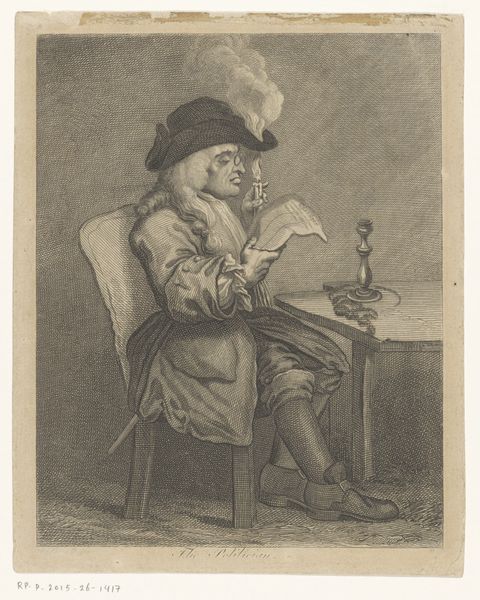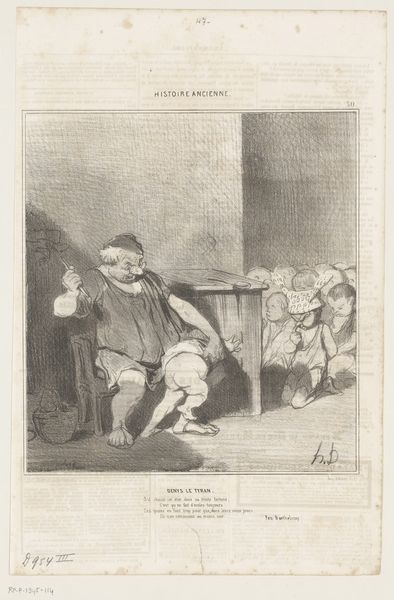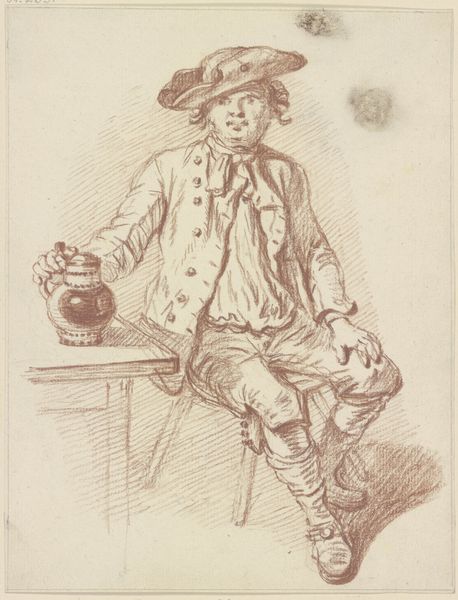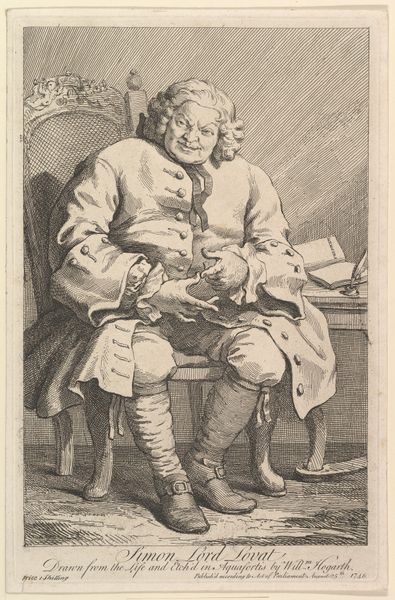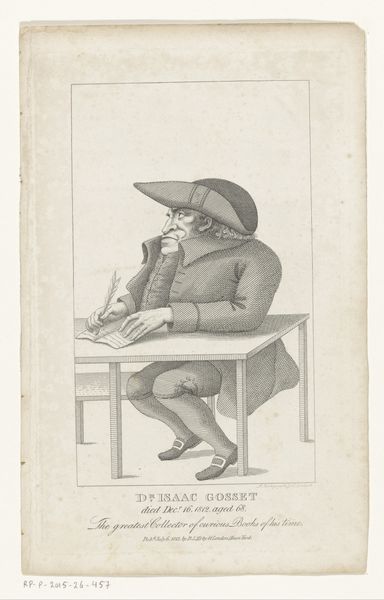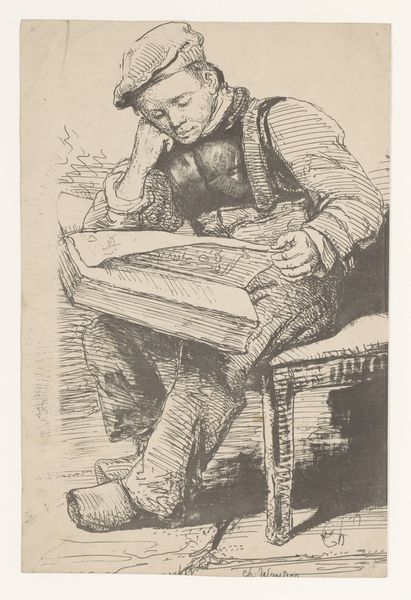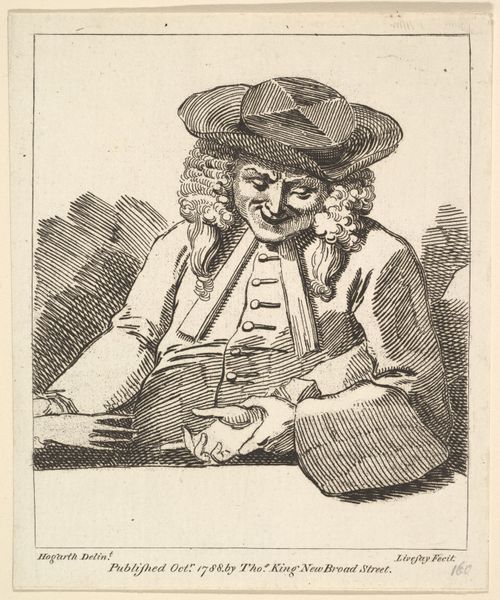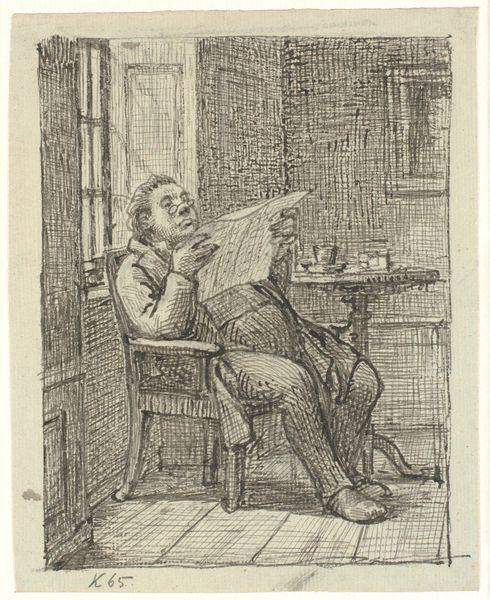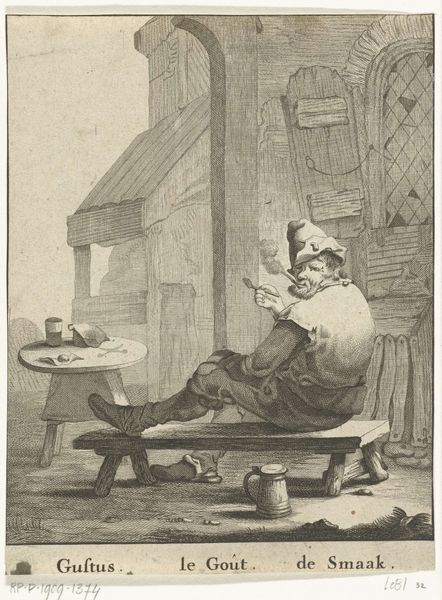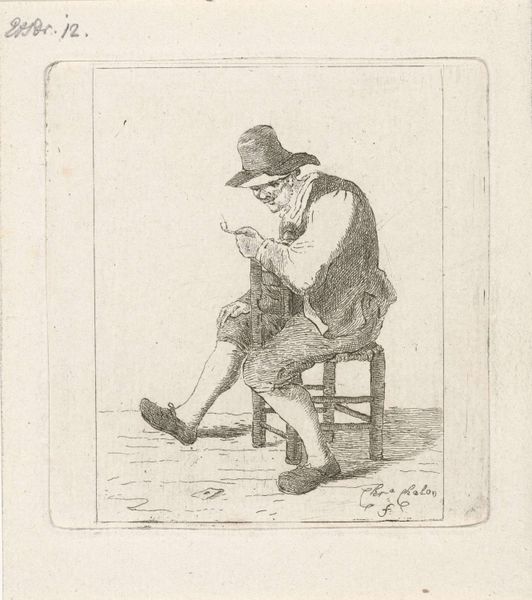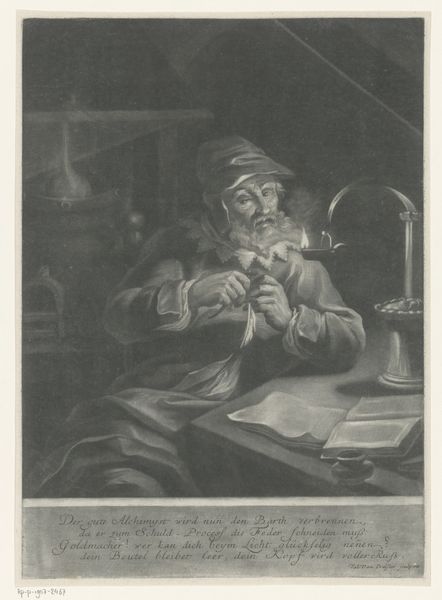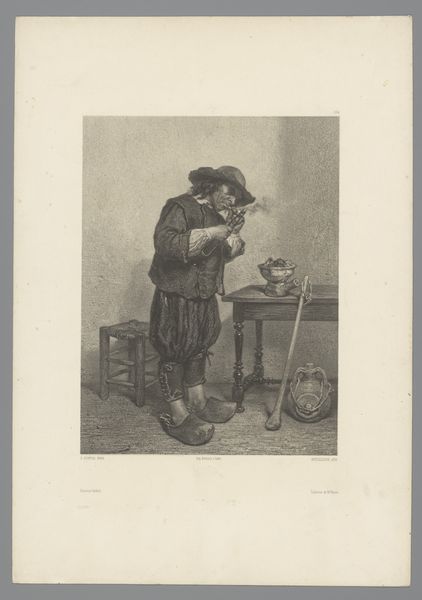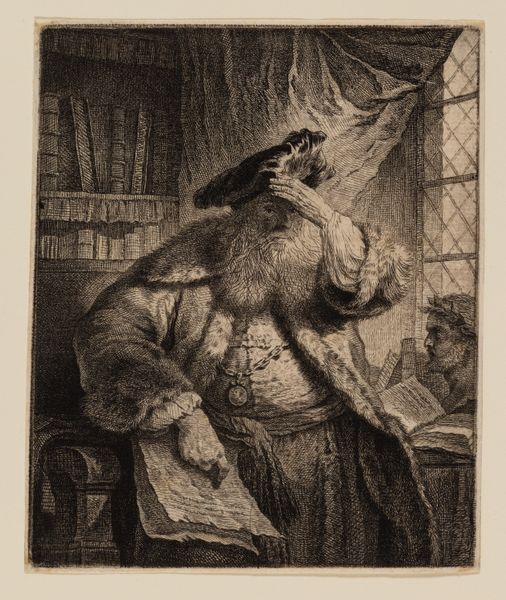
drawing, print, engraving
#
portrait
#
drawing
# print
#
caricature
#
caricature
#
men
#
portrait drawing
#
history-painting
#
engraving
Dimensions: sheet: 14 9/16 x 11 7/16 in. (37 x 29 cm)
Copyright: Public Domain
Curator: Oh, this chap! What do you make of him at first glance? He seems so self-important, lost in thought or perhaps… something else entirely? Editor: A fine question. This is John Keyse Sherwin's print, "The Politician," made in 1775. It’s currently housed here at the Met. As the inscription states, it is after William Hogarth, of course, in the collection of someone with the surname Forrest and exhibited by Jane Hogarth in 1775. Curator: After Hogarth! Yes, you see that acerbic wit peeking through. The lines feel sharp, judgmental even. He's puffed up, literally and figuratively, with that ridiculous plume and the tiny pipe emitting an ostentatious smoke signal! What a perfect lampoon of the era's elite! Editor: It's certainly designed as a caricature. The setting, a rather spartan interior, allows the figure himself to dominate. Note the carefully rendered fabrics versus the blank backdrop—a strategic visual hierarchy. We must consider the public role of satire at the time; images like these were potent political statements, particularly in the ferment before the American Revolution. Curator: You’re right. I keep thinking of Hogarth's famous series, poking fun at societal follies. But there's something uniquely detached about this politician, isn’t there? He is almost entombed in his own mind. Does that disconnect speak to broader political themes do you think, the growing divide between the governing class and the people? Editor: Precisely. Prints like this weren't merely aesthetic objects; they were vehicles for debate, disseminated widely and sparking public discourse. They influenced political opinion and constructed narratives around power. Notice how his gaze is downcast; is he burdened by affairs of state, or just uninterested? The image shrewdly plants these seeds of doubt. Curator: Doubt—yes! Perhaps that’s its power. The ambiguity makes you want to interpret, to cast judgment… perhaps the point isn’t to tell us WHAT to think but to get us thinking, period. What a brilliant, infuriating little piece. Editor: Well said. The brilliance, perhaps, lies in the image's sustained capacity to provoke. I imagine the questions Sherwin asks of the political class, then as now, would resonate across centuries.
Comments
No comments
Be the first to comment and join the conversation on the ultimate creative platform.
